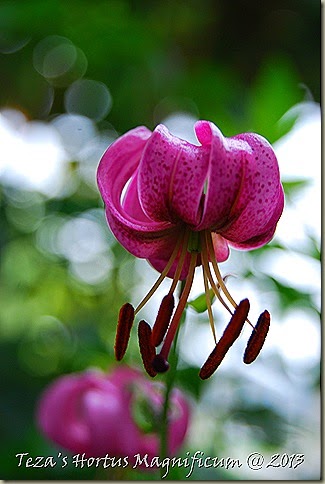Taxonomically this plant could fall into a few categories: there are those who refer to it as Actaea, while others believe it to belong to Cimicifuga. Commonly speaking it could be bugbane or baneberry! Regardless of where one wants to categorize it, make sure it finds a place within your shaded woodland garden! I have always been a fan of the genus [both as Actaea and Cimicifuga] and have come to rely heavily on the heady scent that accompanies the statuesque creamy white to pink flower wants with those belonging to the A. simplex species. Let the buyer beware that this one [A.pachypoda] represents the native woodlander, and while there is a slight fragrance, the entire plant is much smaller in all of its parts! Fear not – it more than makes up for its diminutive stature in grace and style!
This fabulous Mt. Cuba selection of the native east coast woodlander, Actaea pachypoda has glaucous, pewter-blue pinnate foliage compared to the typical green. The 18" tall clumps are topped in spring with short stalks of white flowers, followed by really cool white berries [that are often referred to as ‘dolls eyes’] attached by bright red stems. You're going to love this amazing selection...if you plant it in a shaded site with moist, but well-drained soil.
Specs:
.5-.75m in height and spread. Hardy through Zones 4-8; requires a partly shaded placement, rich in organic matter with well draining soil.
Coming to LittleTree Spring 2011



































3 comments:
I love the colors of this selection. What a beauty. Will she be finding her way into your shade sanctuary? Duh. LOL
Guess what ? wink wink
I have found this little beauty at Canning .. Chris has her website up now and it is finding its way into my little Eden too : ) plus Spigela marilandica that fantastic Inadian Pink : ) it is like Christmas morning over here even though it is snowing yet again and rain for tomorrow ?? EEEKKKKKK !!
Joy : )
Be prepared to be highly disappointed in this plant. The Nursery I work to in Maine has had this plant for two years now both in containers and in gardens,
The Plant is a dog...talk about foliar disease...within a week of flowering black spots begin to appear all over the plant...by the time the fruit set begins, if theres any foliage left at all, you're lucky.
In containers, 75% of the plants are unsaleable by the time they flower with almost 90% having blackened off and gone dormant by fruit set.
I'd planned on buying this plant but after observing it in the gardens...I want nothing to do with it. Avoid it nd you'll avoid heart break.
Post a Comment